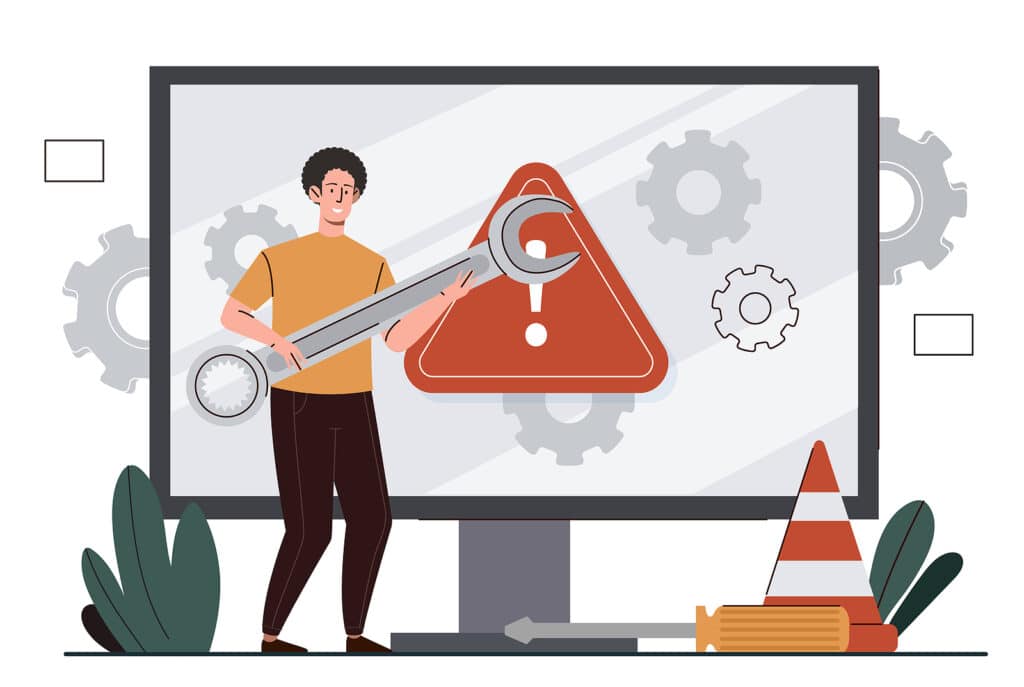Optimizing Website Performance: Best Practices for Faster Loading Times

In today’s fast-paced digital world that we live in today, everybody knows that a website’s loading speed can make or break the user experience. This comprehensive guide by Internet Marketing Geeks will help you explore the best practices for optimizing website performance to achieve faster loading times when it comes to technical development.
Why Optimizing Website Performance is Important
Optimizing website performance is paramount in today’s digital landscape for several compelling reasons. Firstly, it significantly impacts SEO (Search Engine Optimization) and, consequently, a website’s search engine rankings. Search engines like Google prioritize user experience, and loading speed is a fundamental aspect of this. Websites that load quickly provide a smoother and more satisfying experience for users; which aligns with search engines’ efforts to deliver high-quality, relevant results. Consequently, websites with faster loading times often receive a boost in their search engine rankings- this makes them more visible and discoverable to potential visitors. On the other hand, slow-loading websites can face penalties in search rankings, diminishing their chances of reaching a broader audience.
Secondly, website performance optimization directly influences the bounce rate, which measures the percentage of visitors who leave a site after viewing only one page. Slow-loading websites tend to have higher bounce rates because users are less patient in today’s fast-paced digital environment. When visitors encounter sluggish loading times, they are more likely to abandon the site and seek information or products elsewhere. High bounce rates not only result in lost opportunities for engagement and conversions but also signal to search engines that the content may not be relevant or engaging, potentially leading to further SEO setbacks. Therefore, by optimizing website performance and ensuring faster loading times, businesses and website owners can effectively reduce bounce rates; keeping visitors engaged and increasing the likelihood of achieving their online goals, whether that’s making a purchase, signing up for a newsletter, or consuming content!
So How Do We Do it?

Optimize Images– Images often comprise a significant portion of a webpage’s data. To reduce loading times, optimize images by compressing them without sacrificing quality. Utilize modern image formats like WebP, which offer better compression and quality compared to older formats. Additionally, use responsive images to serve different sizes based on the user’s device, ensuring faster loading on mobile devices.
Minimize HTTP Requests– Each element on a webpage, such as images, scripts, and stylesheets, requires an HTTP request. Minimizing these requests can significantly improve loading times. Combine multiple files into one where possible and use CSS sprites to consolidate images. Reducing the number of requests can lead to faster page rendering.
Enable Browser Caching– Leveraging browser caching allows you to store static assets, such as images, stylesheets, and scripts, locally on the user’s device. This reduces the need to re-download these assets on subsequent visits, leading to quicker load times for returning users.
Enable Compression– Enable server-side compression, such as GZIP or Brotli, to reduce the size of files sent to users’ browsers. Compressed files transmit faster over the internet, resulting in reduced loading times. Ensure your web server is configured to use compression for various file types.
Optimize Code– Clean and minify your HTML, CSS, and JavaScript files to remove unnecessary whitespace, comments, and redundant code. Consider asynchronously loading non-essential scripts to prevent them from blocking page rendering. This ensures that the critical parts of your page load quickly.
Prioritize Above-the-Fold Content– To create the perception of a faster website, prioritize loading above-the-fold content first. Load essential content, such as text and images, before less critical elements, such as additional images or scripts. This approach improves initial user engagement by delivering what they see quickly.
Utilize a Content Delivery Network (CDN)– A CDN distributes your website’s content across multiple servers located in various geographic regions. By serving content from servers closer to the user, CDNs reduce latency and speed up loading times. Consider using a CDN, especially if your website caters to a global audience.
Use the Appropriate Plugins – Whatever platform you are using to manage your content and website- whether it is WordPress, Wix, or even Webflow—it will have a range of appropriate tools you can use to help optimize the performance of your website. Be sure to check out the plugin store to look for tools that would compress content, enable content to load appropriately and optimize performance. Be sure to work with your development and maintenance team to update these regularly to avoid missing key updates or changes that may affect the performance of your website in the long run!
In conclusion, optimizing website performance for faster loading times is an ongoing process that involves a combination of techniques and strategies as shown in this blog post! By working to implement these seven key strategies as recommended by the experts at Internet Marketing Geeks you can significantly enhance your website’s loading speed, providing a better user experience, improving SEO rankings, and ultimately driving more traffic and conversions.
Regularly monitoring and fine-tuning your site’s performance will ensure that it continues to load quickly and efficiently for your visitors!
The Internet Marketing Geeks Advantage
At Internet Marketing Geeks we understand the importance of having your business stand out online. Whether that is through SEO, Email Marketing or Web Development, the company has the tools and infrastructure in place to help you thrive in a business environment that is more competitive than ever.
In addition to the website development and technical development services that can help in optimizing website performance; the company is happy to provide other services such as content creation, social media marketing and strategy. Feel free to contact one of our experienced team members to see how we can help today!




